This was another walk last summer, one of many suggested by the Tourist Office in Montefollonico where we were staying, but we chose this particular walk because of its promise of an ancient tree. Even though it was confusing. When I read, Discover the 100 years oak, I assumed it was a typo and they’d omitted a 0. Why celebrate a centennial tree? It must be a millennial. It was titled, The century Ilex trail, but then I read, You will get to the Palazzone farmhouse where, on your left, lies the big field hosting the ancient oak. Surely an ‘ancient’ tree must be more than a hundred years old. Well, that was the impetus for this walk, to guess the age of the tree, but I’m no dendrologist.
We followed the directions to Parco il Tondo, a picnic zone on the edge of town, abandoned now but was it ever occupied ? It’s a circular hub radiating spokes of coloured trails into the surrounding countryside. We took the red path through the woods, all the way down to the Fonte del Bighi.
Quercia, roverella – Oak
A deciduous tree which prefers limestone soil. The leaves have a characteristic furry white underside. The fruit, called acorns, provides excellent food for the wildlife: wild boar, badgers, squirrels. The leaves host a number of parasites that form typical galls of widely differing shapes.
Calvatia gigantea
The giant puffball is a distinctive species, producing perhaps the largest of all fungal fruitbodies. These occur from late summer through the autumn and can be found in various grassy habitats or amongst scrub. It is a good edible fungus whilst young and still white inside. The flesh becomes yellowish and then dark olive-brownish as the spores develop. The fruitbody eventually becomes filled with a mass of rather powdery spores, which are developed in a tissue called the capillitium. At maturity, the outer wall (peridium) breaks open and the spores are released in response to physical contact such as rain splash.
Fonte del Bighi
The spring was already noted as Fonte del Bighi around 1750 by Cav. Antonio Pecci, a nobleman from Siena, in his “Memoirs of places in the ancient state of Siena”, but probably its origins are much older.
The building, as far as one can see, consists of a small brick and stone construction, roofed with a barrel vault with round arches, overhung by a pitched roof. The rendered water tank with worked stone cornice was once used as a public washing place. Higher up in the woods there is a much larger water tank, unfinished, constructed in rendered brickwork and barrel vaulted, constructed during the first world war for storing water; and above the water tank are found two more wells, which were used to collect and filter the water from the rocks; eventually the water was supplied using an underground earthenware piping system. The fountain is said to have been constructed by a monk, namely Fra. Bighi, and was fed from the water seeping through the fissures in the limestone that makes up the hill of Montefollonico. This same fountain supplied the village with drinking water until, in the 1920s, they were connected to the mains water supply.
Piaggio – Ape 50 Pick-up
The original. Always ready to help you out. Unbeatable for its small dimensions, manoeuvrability and limited consumptions. The ideal solution in rural and urban areas.
Quercus ilex – holm oak
Quercus ilex, the evergreen oak, holly oak or holm oak, is a large evergreen oak native to the Mediterranean region. It takes its name from holm, an ancient name for holly. It is a member of the white oak section of the genus, with acorns that mature in a single summer.
The resemblance of the foliage to that of the common European holly, Ilex aquifolium, has led to its common and botanic names. The name ilex was originally the classical Latin name for the holm oak, but later adopted as a botanical genus name for the hollies.
An evergreen tree of large size, attaining in favourable places a height of 21–28 m, and developing in open situations a huge head of densely leafy branches as much across, the terminal portions of the branches usually pendulous in old trees.
The tree stands alone in a large field, on the brow of a hill, just where the land falls away behind it. It’s a green globe, its long branches reaching down to the ground. I walked all around looking for a way in.
Once inside I immediately felt at home. I breathed a sigh of relief. Shaded from the midday sun, on a crispy carpet of dried leaves, protected on all sides beneath the skirts of its branches, this is surely an ancient tree, more millennial than centennial. It’s a green shelter, a whirling dervish, a big top.
when god decided to invent
everything he took one
breath bigger than a circustent
and everything began
E.E.Cummings
This is where it all started. I pointed my camera to heaven and clicked repeatedly back down to earth.
I spun around a few times, dizzy with the sparkling light and the leafy, loamy holm oak aroma. I was enclosed by these benevolent branches, the bright outside world seeping in under the fringe of leaves. We inhaled and we exhaled, the tree and me, we exchanged breaths and both of us were rejuvenated.
I still don’t know its age
it felt as old as the hills and as new as the sunlight
but it’s younger now than it was before.
I came out of my tree trance and we moved on, following the path but not always the right direction. We took a few wrong turns then doubled back, too much heat, looking for shade, missing our way.
We got lost in the forest and then stumbled in circles around an unexpected olive grove.
Paths disappeared without warning until Montepulciano on the horizon showed us the way.
Each of these photographs is a stitch in time
to be unpicked in order
to follow the thread of our footsteps.
※
Walking Back To Montefollonico / Quercione Delle Checche




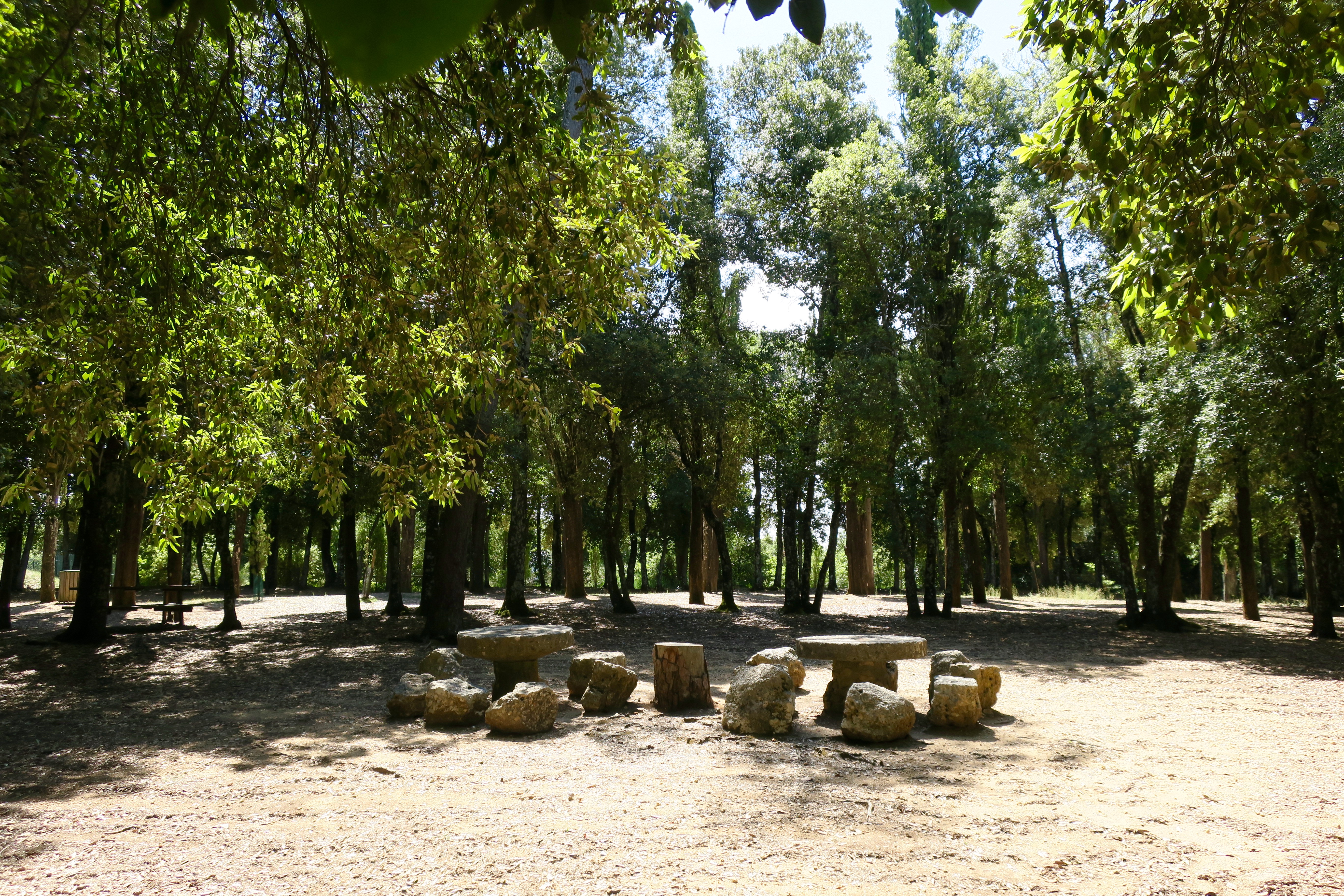

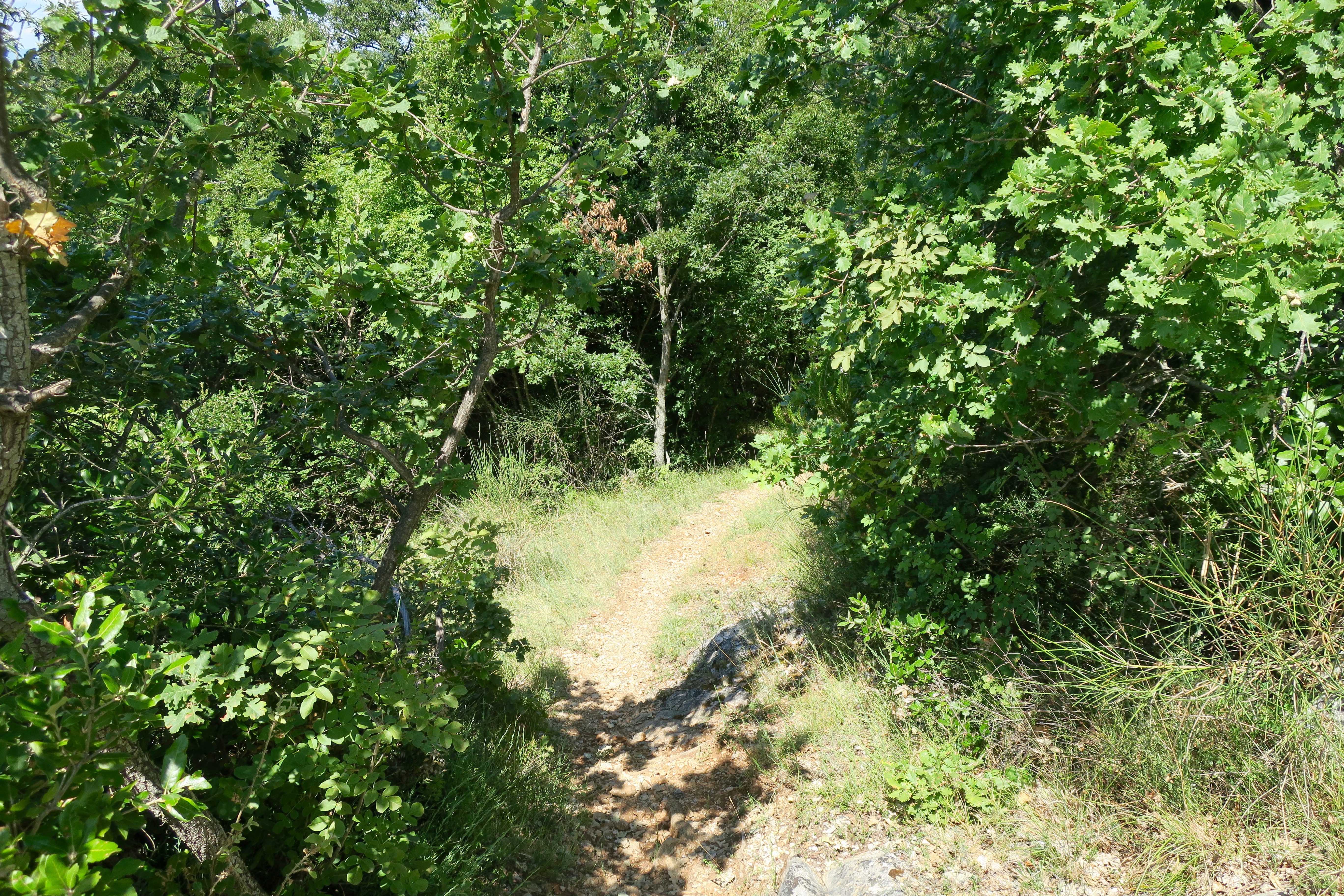
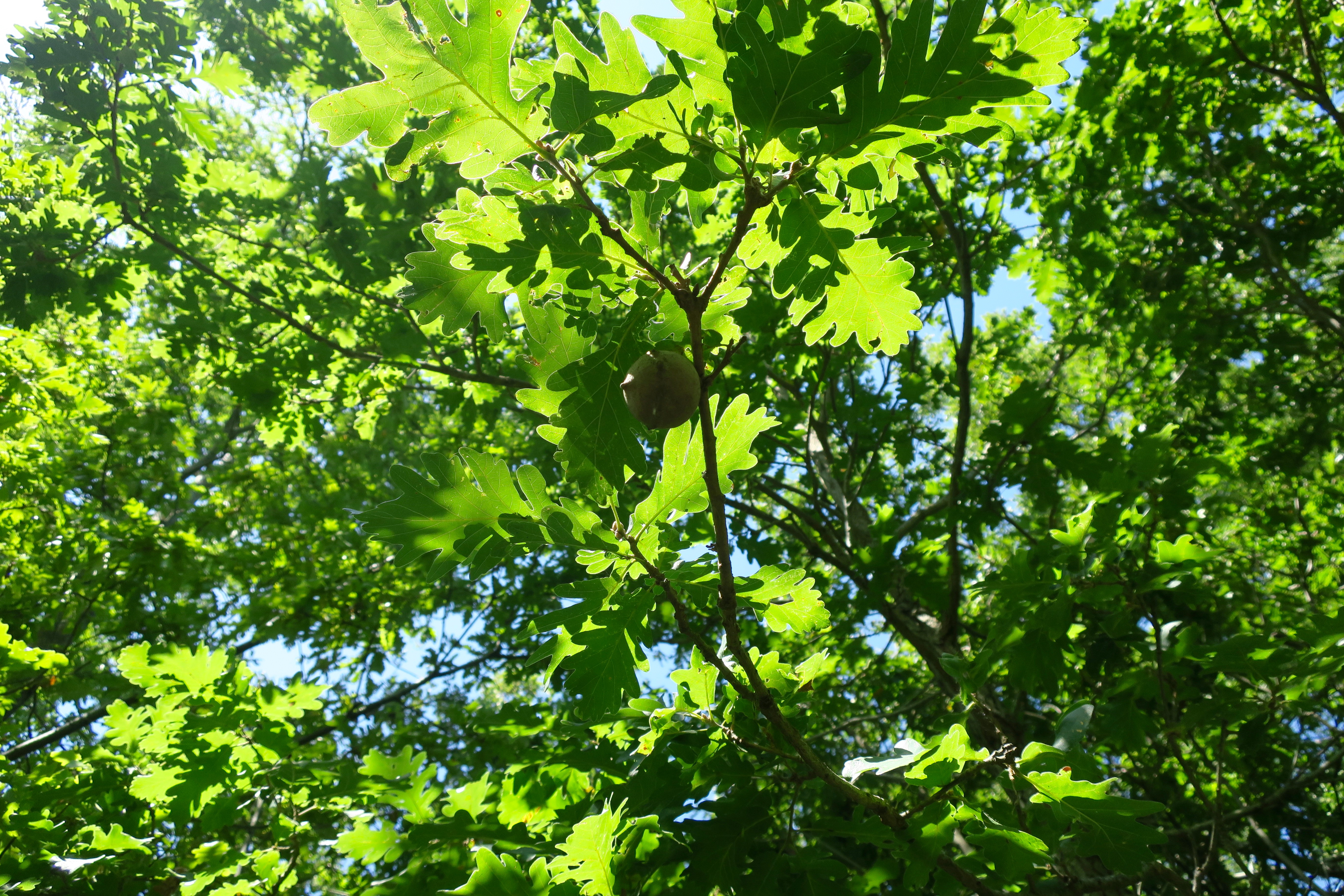
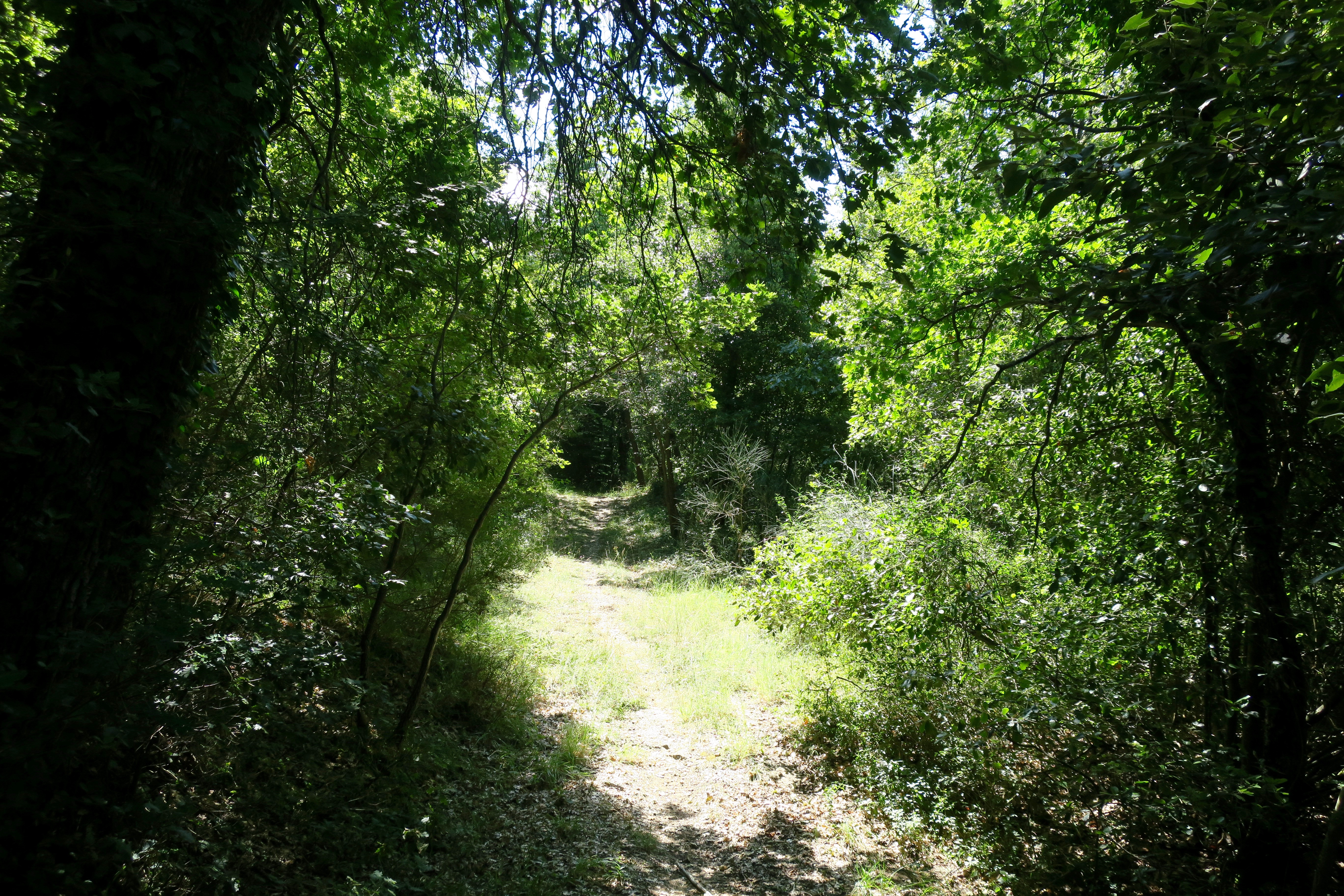



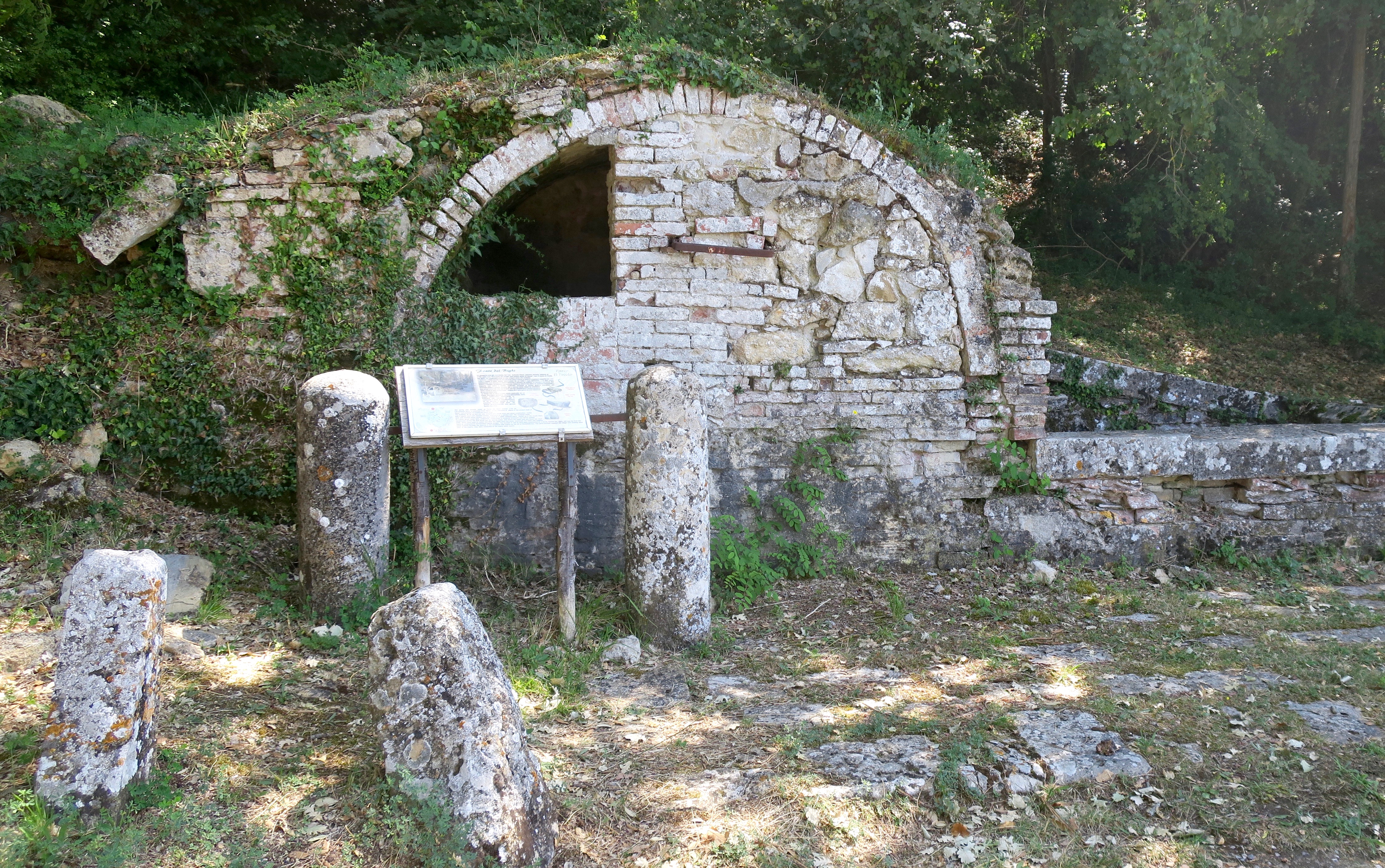






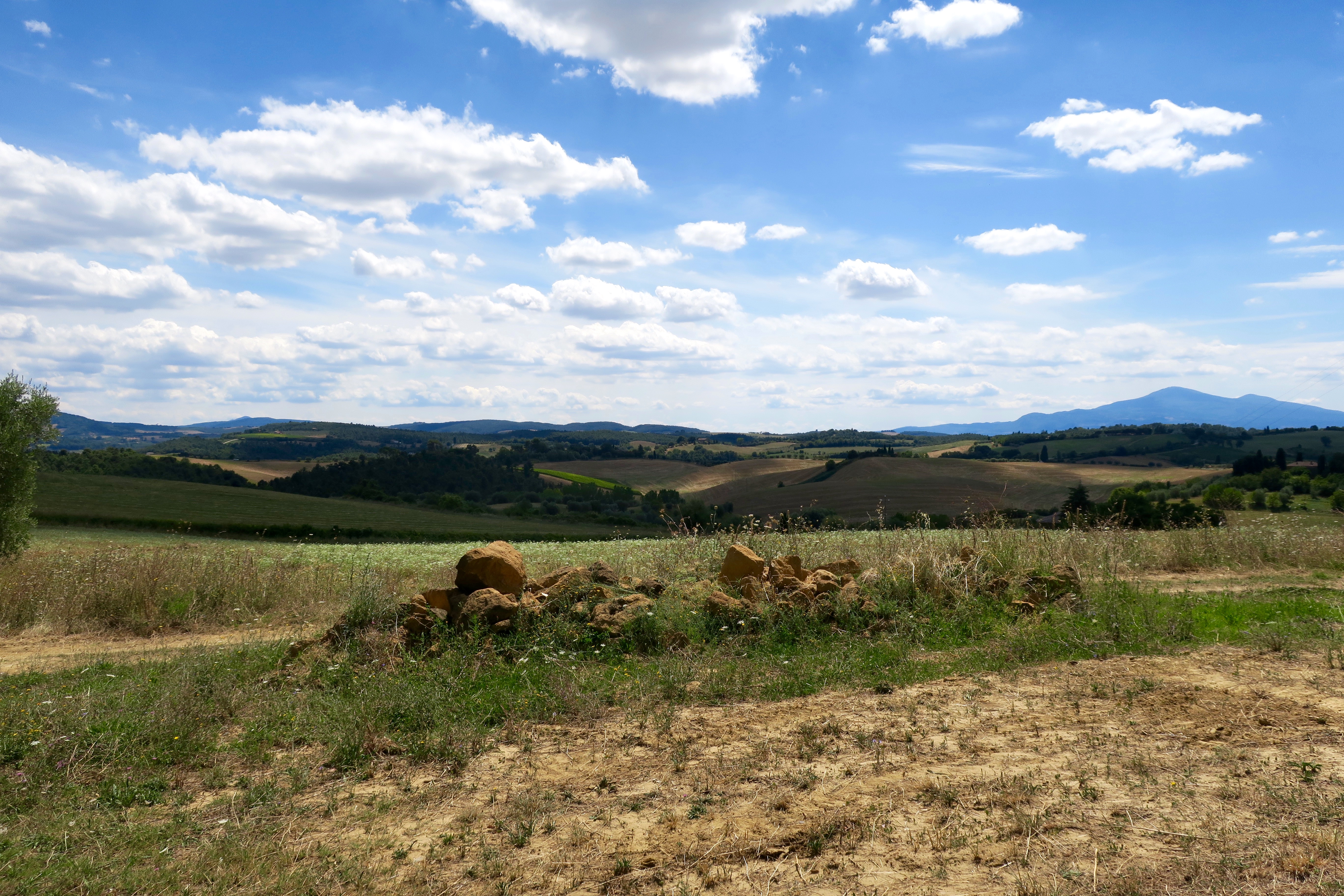



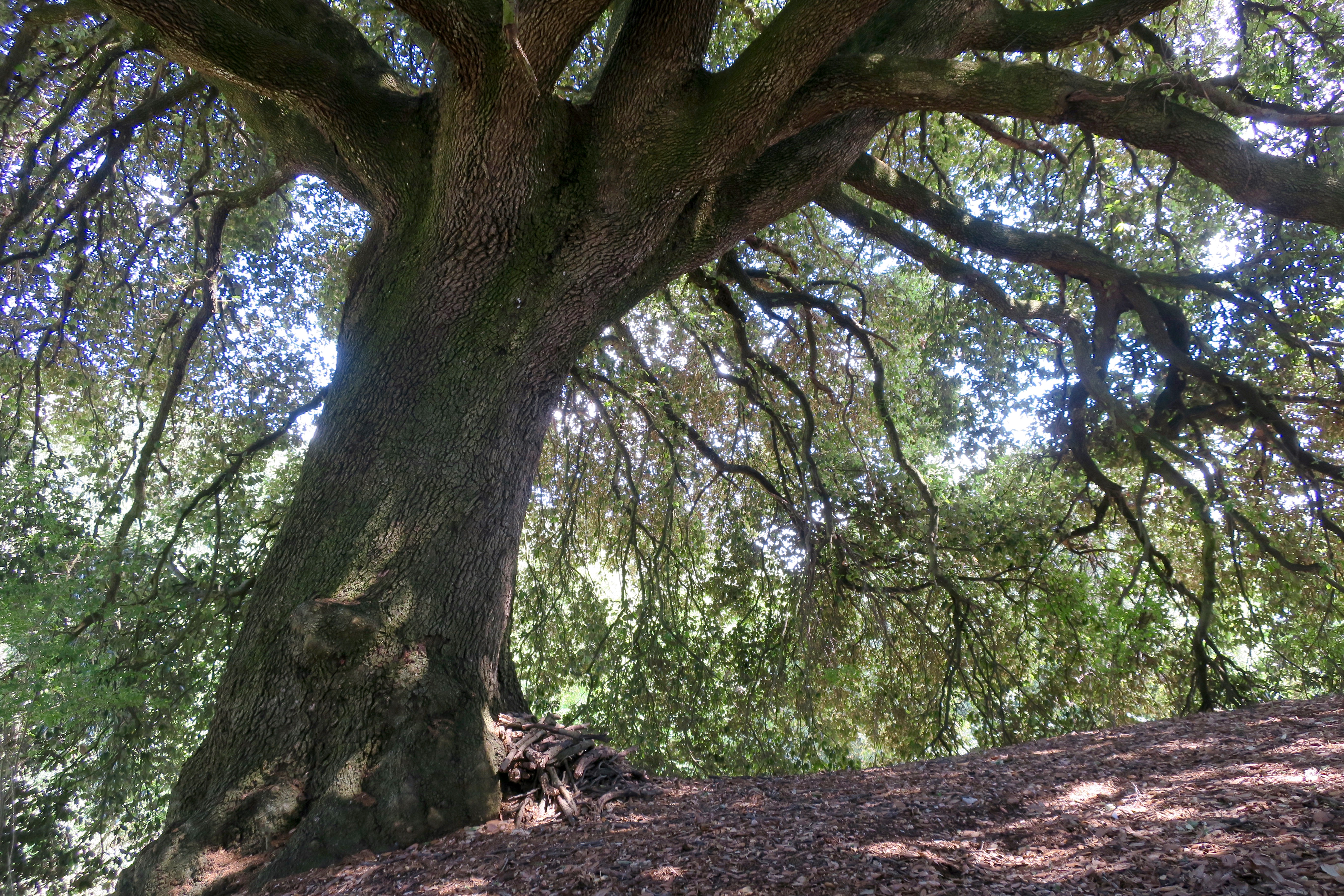





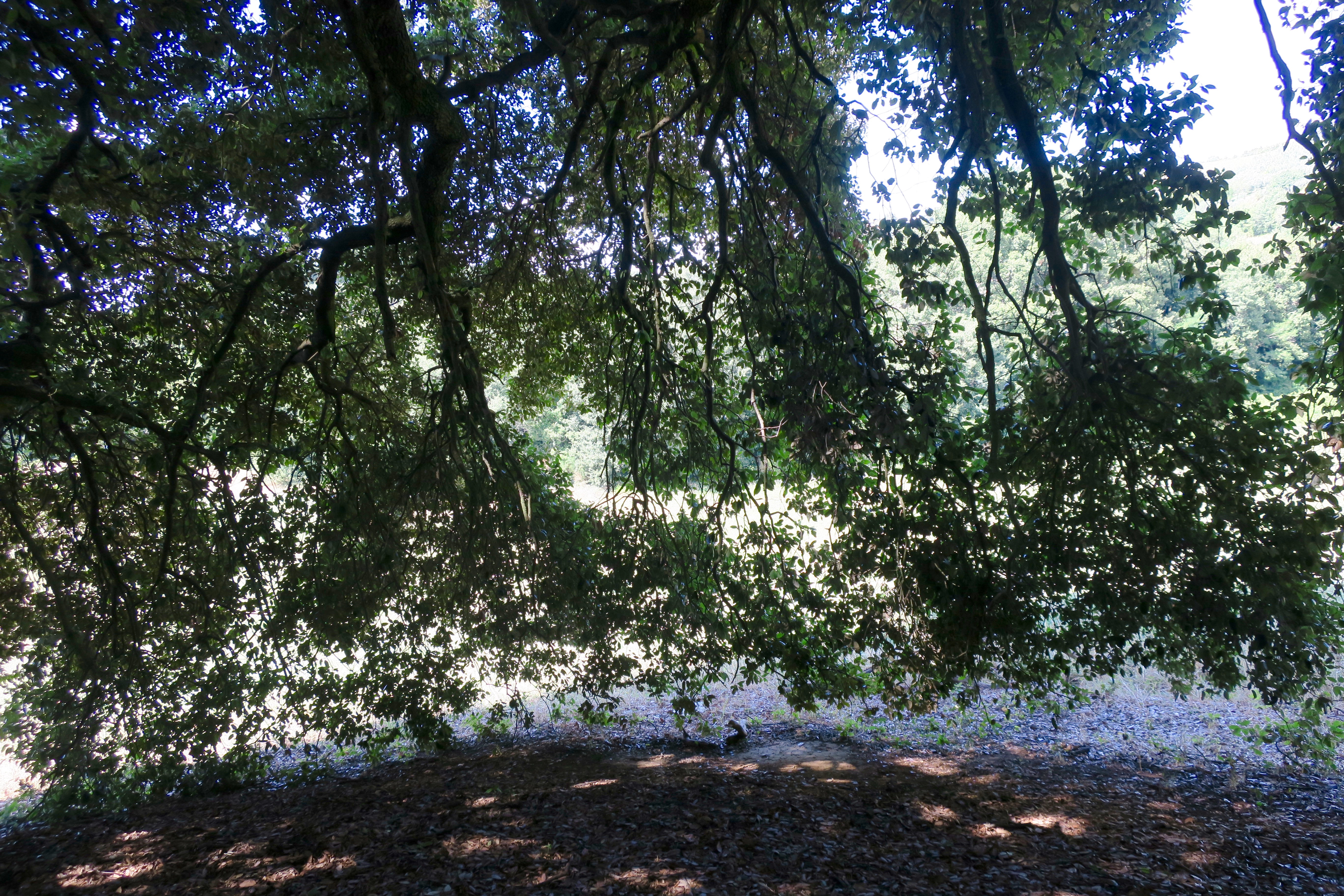



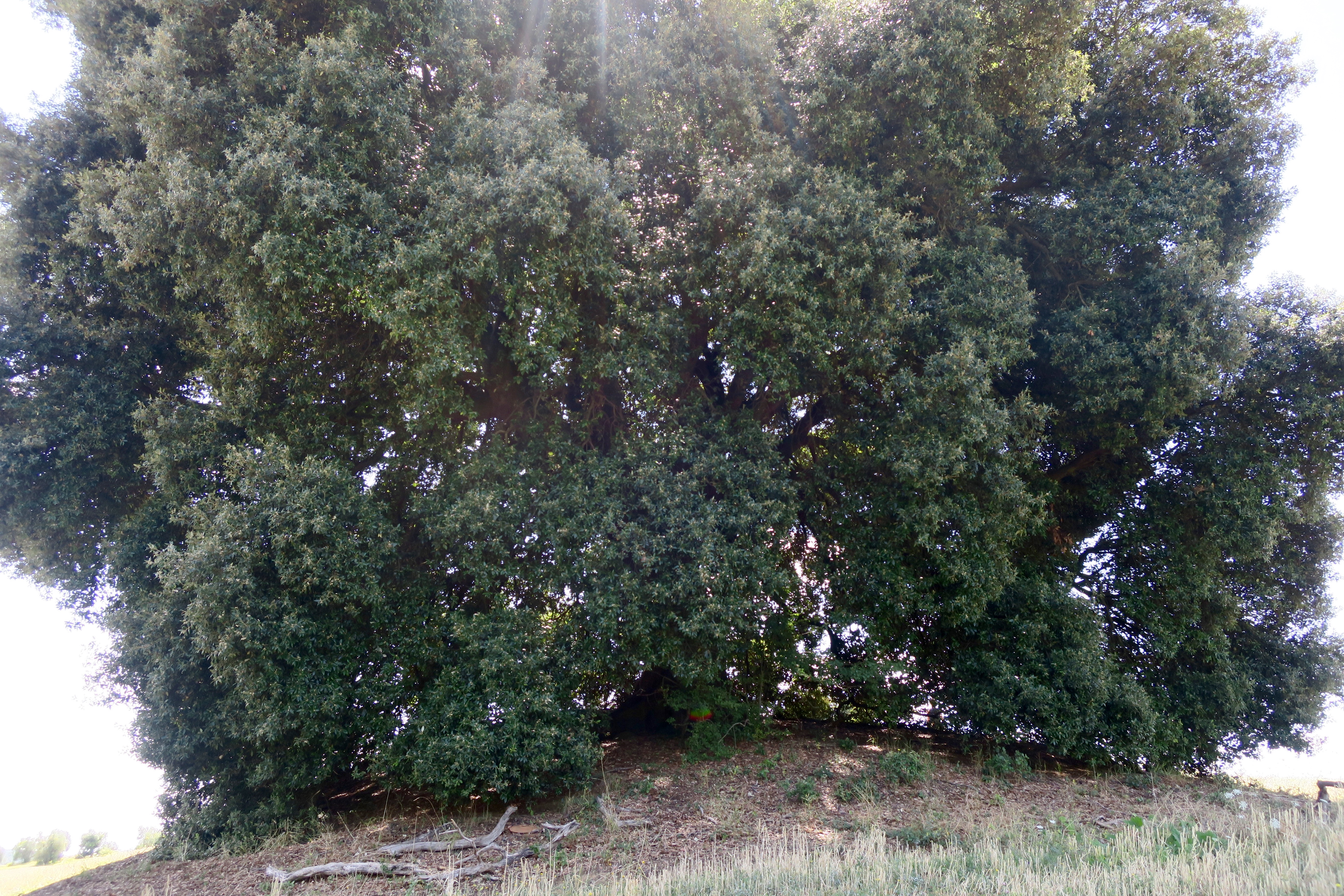









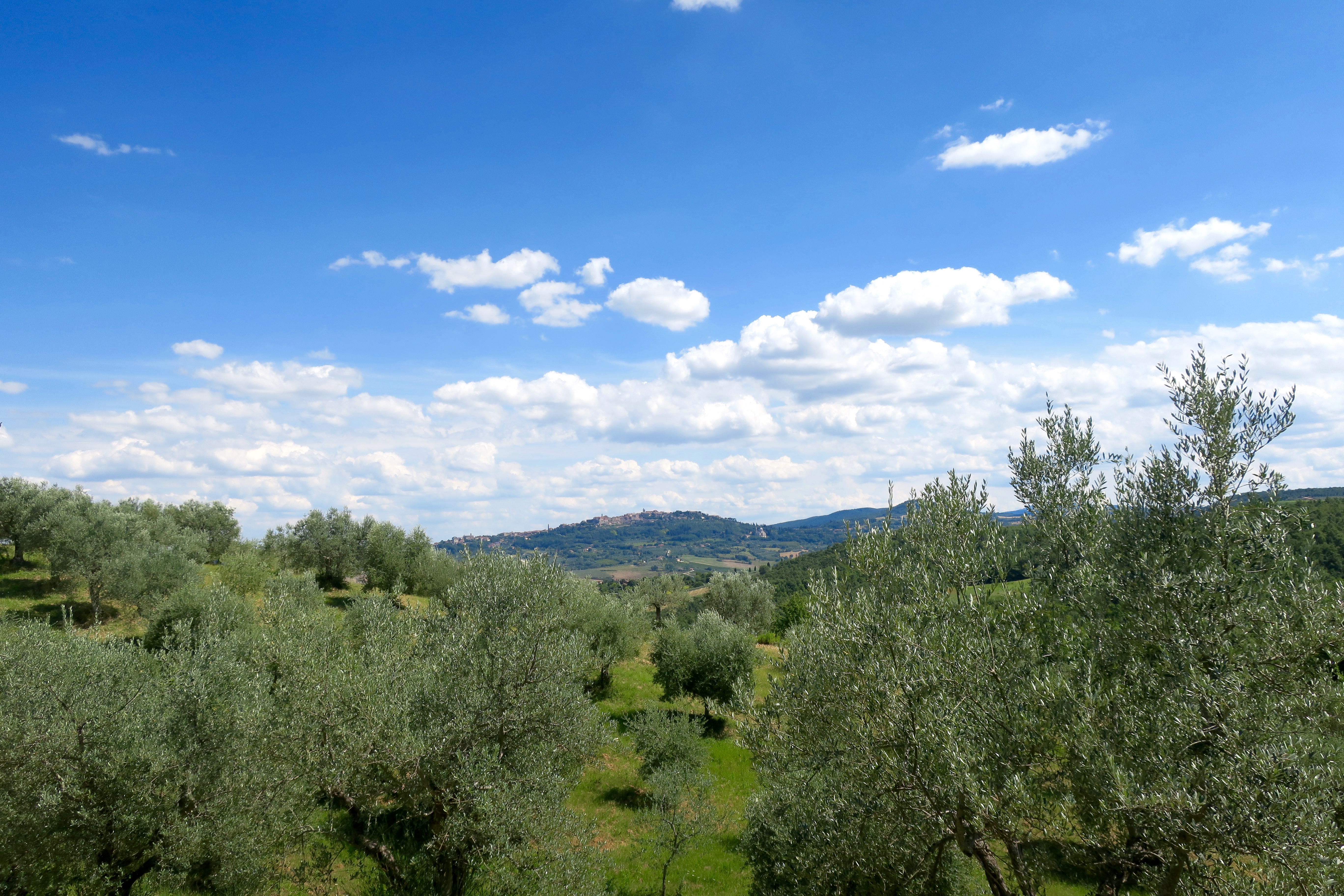



A nice account of ‘tree trance’!
I asked its age but still no idea. It felt timeless!